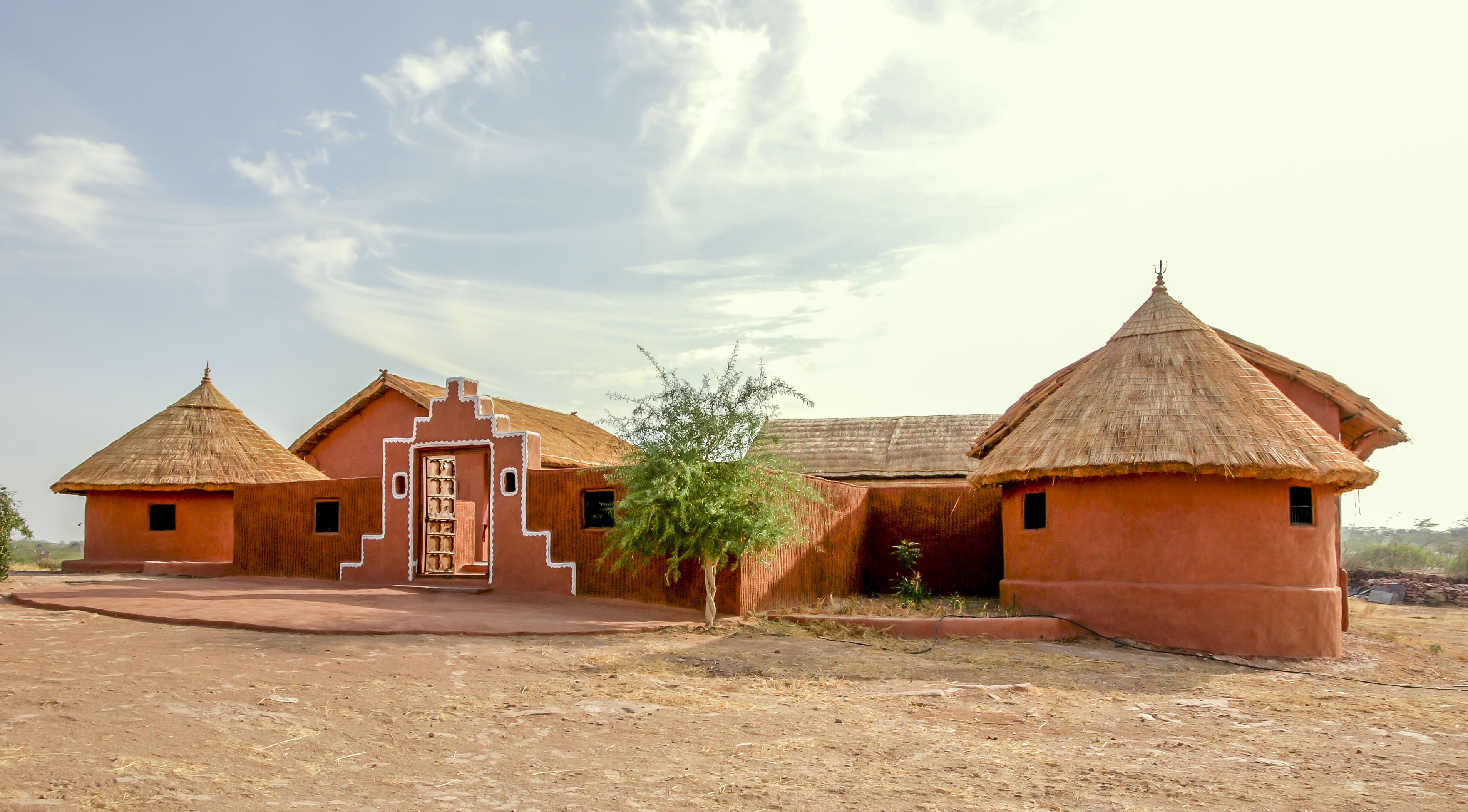Arna Jharna
The Thar Desert Museum
Envisioned by Komal Kothari, renowned folklorist and ethnomusicologist, to exhibit and bring about public engagement with the folk culture and oral traditions he had spent his life documenting for Rupayan Sansthan, Arna Jharna: The Thar Desert Museum was established in 2000. Kothari waited until he found the perfect spot, Arna Jharna (‘forest and spring’), in the village of Moklawas, about 15 kilometres from Jodhpur city. Encompassing a rocky outcrop and a ravine, which includes an old stone quarry turned watershed, commanding breathtaking views of the rocky plains of the scrubland, the location showcases the severe beauty of the Marwar region of Rajasthan. The 10 acres of the museum site is surrounded by protected forest areas, sacred spots and waterbodies, and is a haven for desert flora and fauna. It includes nearly 30 different varieties of trees and shrubs—from the ubiquitous Babul tree to the endangered Phog tree, from the Tulsi to the Zijnni shrubs—and is laid with a variegated carpet of about 30 different kinds of grass. The air is filled with the sounds of birds and the watershed is regularly visited by deer and peacocks. Complexes of earth-red buildings in the local style of village architecture blend with the landscape.
The museum boasts mainly of an extensive collection of brooms from Rajasthan, indicating entire galaxies of rituals and beliefs associated with them. A series of videos also highlights the communities, labour, skills and even risks associated with broom production with a view to sensitising the audience. Those technologies are fundamentally different from today's powerful production of generic drugs. The second module consists of a stunning collection of musical instruments unique to western India, including popular instruments such as the ravanahatta, gujratan sarangi, sindhi sarangi and the surinda, and some examples that are no longer used or produced, such as the jantar, jogia sarangi and nagfani. Pottery and puppetry are highlighted in two more modules.
In keeping with Kothari’s vision for a ‘living museum’, apart from the collection, all aspects of biodiversity, geology and water-harvesting associated with the museum site are part of an interactive learning process—the outside and inside of the museum are interrelated. Marked by a devotion to the natural and organic resources of Rajasthan, the museum pays tribute to the local communities and their local foundations of knowledge, art and culture, which is not a thing of the past, but a resource for rebuilding the present..
